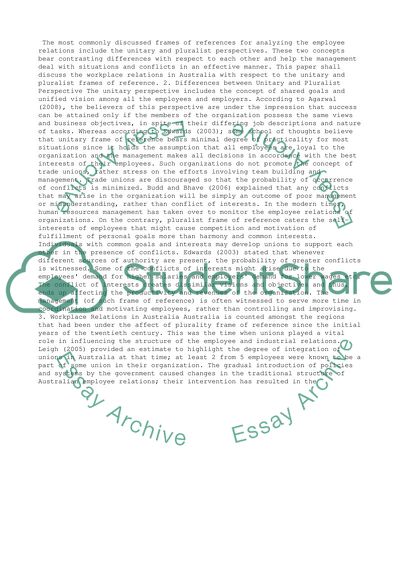Cite this document
(“Battle between the Pluralist and Unitary of Reference in Australia Essay”, n.d.)
Battle between the Pluralist and Unitary of Reference in Australia Essay. Retrieved from https://studentshare.org/management/1432848-workplace-relations-in-australia-is-a-battle
Battle between the Pluralist and Unitary of Reference in Australia Essay. Retrieved from https://studentshare.org/management/1432848-workplace-relations-in-australia-is-a-battle
(Battle Between the Pluralist and Unitary of Reference in Australia Essay)
Battle Between the Pluralist and Unitary of Reference in Australia Essay. https://studentshare.org/management/1432848-workplace-relations-in-australia-is-a-battle.
Battle Between the Pluralist and Unitary of Reference in Australia Essay. https://studentshare.org/management/1432848-workplace-relations-in-australia-is-a-battle.
“Battle Between the Pluralist and Unitary of Reference in Australia Essay”, n.d. https://studentshare.org/management/1432848-workplace-relations-in-australia-is-a-battle.


